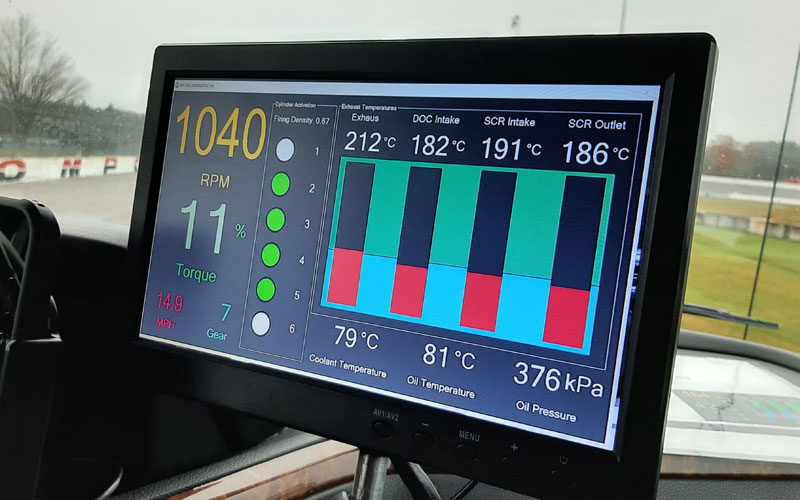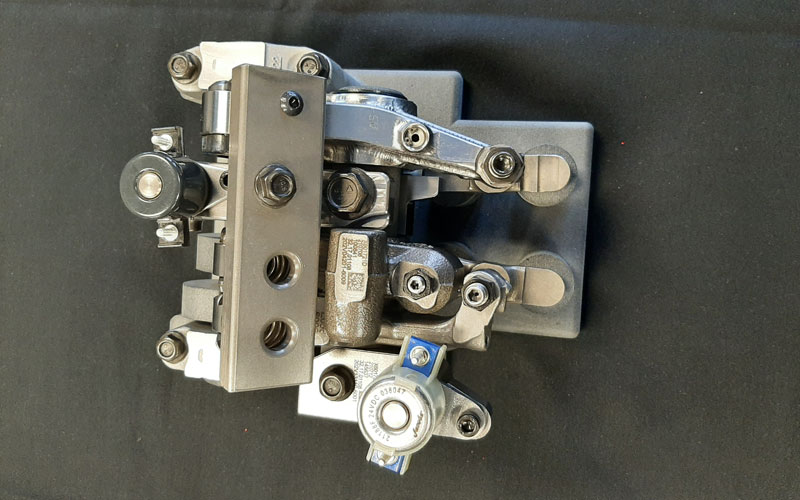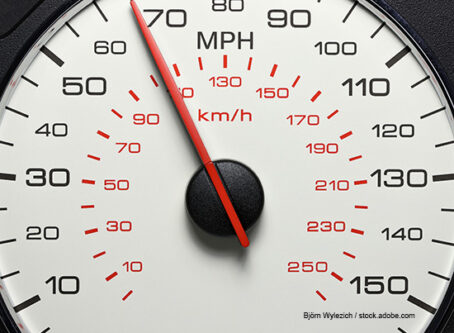Jacobs unveils cylinder deactivation tech to cut emissions
HARTFORD, Conn. – Jacobs Vehicle Systems, maker of Jake Brakes, has developed valvetrain technologies that could help engine and truck manufacturers meet stricter federal exhaust emission limits expected in 2027. The tech also could drastically cut vibration during engine shutdown to avoid waking drivers asleep in their bunks.
The two products – cylinder deactivation and active decompression technology – are installed on the engine of a road tractor that the manufacturer showed to trade media reporters this week near its home in Hartford, Conn. Representatives said that the truck will soon embark on a North American tour to demonstrate the products to drivers, fleets, industry associations, and truck and engine manufacturers.
The 2018 International LT625 tractor with an A26 diesel is planned to be subjected to real-world driving situations in the coming months, according to Steve Ernest, vice president of engineering and business development at Jacobs.

“We’re excited to begin this important tour,” he said. “We will be working with a wide variety of important commercial vehicle shareholders in the coming months to schedule test drives to demonstrate and showcase our latest technologies.”
Emission-cutting tech
Jacobs’ cylinder deactivation switches off two, four or more cylinders of a six-cylinder diesel to raise exhaust and aftertreatment temperatures at low-load and start-up, which can improve overall fuel economy by as much as 25%, he explained. Active decompression technology eliminates engine shake at shutdown – something long-haul drivers trying to get some sleep have compained about for years – and speeds startups while reducing wear and tear on engine components. In hybrid vehicles, ADT enables a faster transition from an electric motor to the diesel.

“In all parts of the world, commercial vehicle manufacturers are looking for new and improved technologies to comply with stricter legal limits on CO2 and NOx emissions,” said Robb Janak, director of new technology for Jacobs. “Cylinder deactivation is technically proven in all of the latest test measures. Moreover, CDA is a cost-effective solution that will positively impact the advance of the diesel engine into a low emissions future.”
Less cab vibration from shut-down, starting
Active decompression technology, meanwhile, “is a simple, cost-effective design that eliminates the negative impacts of engine shutdown and restart such as excessive cab vibration and starter wear out,” he said, “while simultaneously helping to significantly reduce energy consumption.” Engine stop-start products are used by some truck operators to keep batteries charged while complying with local and state laws that limit engine idling.
Active decompression tech decreases the magnitude of engine-shake during shut-down by 90%, Janak said. In demonstrations for reporters, the reduction in engine shaking during shutdown was obvious when active decompression was activated compared to when it wasn’t. From a sleeper bunk, shutdown should be almost imperceptible
The engine control unit automatically activates active decompression whenever the engine shuts down or starts up and works by keeping valves open and the cylinders decompressed, he explained. When a driver switches off the ignition, it shuts down smoothly. When starting up, the engine is kept in a decompressed state that decreases cranking torque by 40% and allows the engine to spin up to twice its normal speed for smoother starting, faster priming of the fuel system, and decreased wear on the starter gear, flywheel and other components. This also can allow the use of smaller and lighter batteries, cables and starter.
When turning over, a decompressed diesel quickly reaches its critical compression ignition speeds, which is especially useful in cold temperatures, Janak said. When combined with supplemental air inlet heaters, cylinders are pre-warmed without compression, which reduces battery loads. When high cranking speed is reached, the engine compression is reactivated and fueling begins.
Cuts fuel costs
Jacobs’ cylinder deactivation reduces emissions of nitrous oxide and carbon dioxide, and improves fuel economy during warm-up and low engine loads, such as urban driving conditions. Cylinder deactivation represents an industry breakthrough because lower emissions and improved fuel economy have been mutually exclusive, Janak said. Lowering nitrogen oxide emissions by raising after-treatment temperatures typically require use of additional fuel, but not with cylinder deactivation.

Cylinder deactivation works over the lifetime of the vehicle by turning a six-cylinder engine into a four-cylinder engine or less whenever the load drops below a pre-determined threshold. When the valve lift on selected cylinders is deactivated, their injectors also go to zero fuel, improving overall fuel economy by up to 25 percent. Cylinders that continue working run hotter, increasing efficiency and cutting emissions, he said. In a low load cycle, a Class 8 truck equipped with Jacobs’ CDA and selective catalytic reduction had 77% reduced NOx emissions and 12% reduced carbon dioxide.
The proven and production-ready technology has been demonstrated and noted by the California Air Resources Board and the U.S. Environmental Protection Agency as essential to meet 2024 and 2027 emission targets for low-load drive cycles in combination with advanced SCR systems. Regulators in Europe and China are widely expected to follow suit for their Euro 7 and China 7 emissions standards.
“Commercial vehicle manufacturers are looking for new and improved technologies to comply with stricter legal limits on CO2 and NOx emissions – in all parts of the world and ideally via one global engine platform,” Janak said. “Cylinder deactivation is technically proven in the latest tests, such as real driving emissions and CARB low-load cycle for heavy-duty trucks, to address these requirements.”
Tested technology
Cylinder deactivation has been used for decades on gasoline engines for passenger cars and light trucks, but it is new relatively new to diesel-powered heavy trucks, he said. Announced in 2018, Jacobs’ Cylinder deactivation hardware has been demonstrated on more than 20 heavy-duty engine platforms, covering 2- to 15-liter diesels, as well as 10 heavy-duty truck road tests in North America, Europe and Asia, Janak said. It has undergone more than 27,000 hours and 200,000 miles of durability testing. Jacobs has done more than 8 billion test cycles on CDA components and over 470 million cycles of fatigue and overload testing.
Cylinder deactivation mechanisms designed for the company’s latest engine brake are used in the valvetrain to disable the opening of the intake and exhaust valves, Janak said. The hydraulically activated mechanism is integrated in a collapsing valve bridge system for overhead camshaft engines or with a collapsing pushrod system for cam-in-block engines. When combined with disabled injection in selected cylinders, multiple cylinders can be deactivated as needed.
The deactivated cylinders act as gas springs and return the compressed energy of the air back to the crank. As a result, at low engine loads with three of six cylinders deactivated, fuel consumption can be improved by up to 20 percent.
“CDA can add a small cost to engine production, but that cost can be mitigated by reducing the size and complexity of the aftertreatment system or eliminating the need for other technology that reduces emissions,” said Ernest, the Jacobs vice-president. “Because CDA ultimately reduces fuel consumption and requires less maintenance than other external solutions designed to raise aftertreatment temperatures, it will result in a lower total cost of ownership.”
YouTube videos offers explanations of the Jacobs technologies. LL









